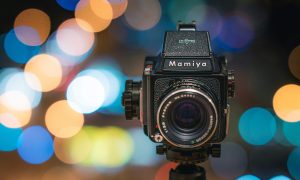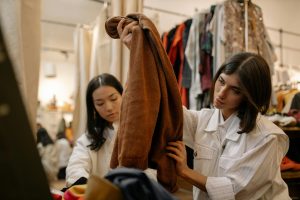Exploring the intersection of fashion and wearable technology
The fashion industry has always been at the forefront of innovation and technology. From the use of advanced materials to the incorporation of digital designs, fashion designers constantly seek ways to push the boundaries and create unique and cutting-edge clothing. However, one area that has seen a rapid growth and evolution is the intersection of fashion and wearable technology. This fusion of style and technology has paved the way for a new era of fashion that not only looks good but also has a practical purpose. In this article, we will explore this exciting intersection and uncover the endless opportunities it presents for the fashion industry.
The Rise of Wearable Technology in Fashion
Wearable technology, also known as tech fashion or smart clothing, refers to clothing or accessories that incorporate technology to enhance their functionality. It can range from simple smartwatches and fitness trackers to more sophisticated pieces like LED-light up dresses and self-heating jackets. The concept of wearable technology in fashion first gained mainstream attention in the early 2000s, with the launch of fitness trackers and smartwatches by companies like Fitbit and Apple. Since then, the market has grown, and the potential for this technology in the fashion world has expanded exponentially.
The Benefits of Wearable Technology in Fashion
The integration of technology into fashion offers a myriad of benefits for both consumers and fashion brands. For consumers, wearable technology provides a convenient and stylish way to track their health and fitness goals, stay connected, and even make payments without carrying around multiple devices. For fashion brands, it opens up a whole new world of possibilities for creating innovative and functional designs that appeal to the tech-savvy and fashion-forward consumer.
Moreover, wearable technology has the potential to revolutionize the fashion industry in terms of sustainability. With the rise of fast fashion and its detrimental impact on the environment, there is a growing demand for more sustainable fashion options. Wearable technology can play a significant role in this, with the development of eco-friendly materials and the use of renewable energy sources such as solar-powered clothing. It also allows for the creation of smart clothing that can monitor and adjust the wearer’s body temperature, reducing the need for excessive layers of clothing and thus reducing waste.
The Fashion Industry Embraces Wearable Technology
The fashion industry has always been quick to adapt to new trends and innovations, and the integration of technology into fashion is no exception. Over the past few years, we have seen several collaborations between tech companies and fashion designers, resulting in some truly remarkable pieces. For example, fashion designer Zac Posen teamed up with Google to create a dress that changes colors based on social media activity, while Dutch designer Pauline van Dongen collaborated with the startup Wearable Solar to create a coat with built-in solar panels for charging electronic devices. These collaborations not only showcase the potential of wearable technology but also introduce it to a wider audience through the world of fashion.
Challenges Faced by the Fashion and Wearable Technology Industry
As with any new technology, there are still some challenges that the fashion and wearable technology industry must face. One of the main challenges is the issue of privacy and security. With pieces like smart glasses and shoes equipped with GPS trackers, there are concerns about data collection and potential security breaches. Additionally, there is a lack of standardization in the industry, making it difficult for consumers to determine the quality and reliability of wearable technology products.
Another challenge is the high cost of producing and purchasing these tech-infused fashion items. While the prices are expected to decrease with advancements in technology and increased demand, wearable technology remains a luxury for most consumers. This makes it challenging for fashion brands to mass-produce and market these products to a wider audience.
The Future of Fashion and Wearable Technology
The potential for wearable technology in fashion is vast, and the future looks bright. As technology continues to advance and become more affordable, we can expect to see a greater integration of technology into everyday fashion. We can also expect to see improvements in functionality, such as the incorporation of artificial intelligence and virtual and augmented reality into wearable technology.
Moreover, the future of fashion and wearable technology also holds potential for customization. With the use of data tracking and analytics, wearable technology can be personalized to fit the specific needs and preferences of the wearer. This could mean clothing that adjusts to the wearer’s body shape or temperature, or smart shoes that detect and correct the wearer’s gait. The possibilities are endless and will undoubtedly shape the way we think about and interact with fashion in the future.
In conclusion, the intersection of fashion and wearable technology is an exciting and rapidly expanding field that offers endless opportunities for the fashion industry. It has the potential to enhance our daily lives and contribute towards a more sustainable and personalized approach to fashion. As technology continues to advance and consumer demand grows, we can expect to see even more innovative and functional designs from the fusion of fashion and technology.










